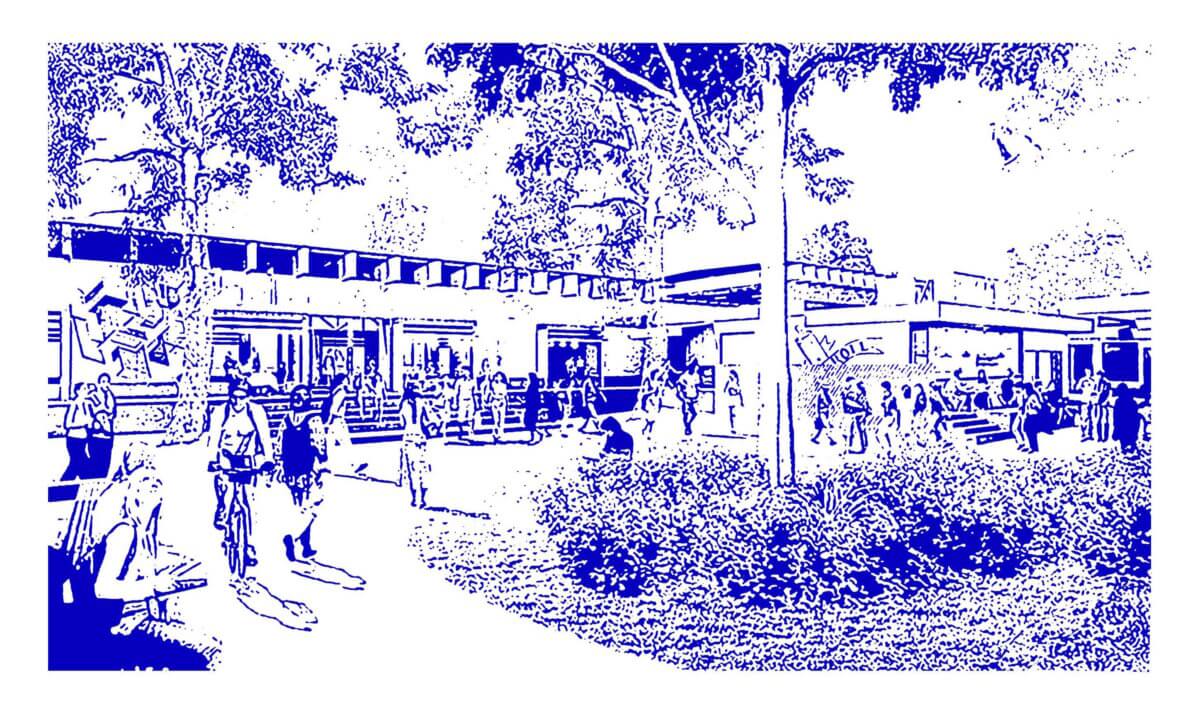Over the last year, countless spaces at ANU have disappeared behind fences, into piles of rubble and under scaffolding. Navigating campus has become akin to the constantly moving maze I have a recurring dream about – every time I spot a gap in the cyclone fencing, I see it move out of the corner of my eye and turn around to find myself enclosed.
I can make do with this inconvenience, though – and I’m privileged to experience it as a mere inconvenience, rather than a genuine impediment to me accessing many spaces on campus. Not everyone is this lucky. The campus is undeniably less accessible than it was a year ago, physically closing out disabled students for whom having to walk further, use stairs or navigate busy crowds might just not be an option. It is not good enough.
Over time, other detrimental effects on the community are emerging, that weren’t quite so apparent at the outset. Slowly, alongside the physical changes, something less tangible is changing. As communal spaces disappear and morph, so too, it seems, does the community that inhabits them.
Without a central space for events, events become smaller and more isolated. They’re forced to the peripheries of the campus, or cease to be held at all. With such limited parking, accessibility becomes a minefield, and even moving equipment and supplies becomes a logistical nightmare. Events play an important social role; more than that, they’re a way of expressing values. With less visible spaces to protest or to celebrate, there’s less opportunity for groups to express their collective identity.
Day-to-day, different parts of the university feel more distant. We carve out our own paths, sometimes physically (see: Chifley Meadow), travelling between the specific buildings we need. But crossing campus is just that much harder, and that much less worthwhile just for a better study spot or a sunnier lunch location. Our routines on campus have become more localised. The divisions between faculties seem to grow in more ways than one. Lacking a central space, the feeling of social interconnectedness that seeing familiar faces all over campus brings gets weaker.
It feels hyperbolic, to link construction to such substantial shifts in the way we experience campus. But it is no new concept – there is a rich academic tradition of exploring the effects of physical space on the ways in which we inhabit, experience and participate in the world. Sociology and anthropology examine the ways in which spaces include and exclude, and the forms of socialising and community building they facilitate. Human geographer Allan Pred puts it beautifully, arguing that the organisation of physical space is “inseparable from the reproduction and transformation of society in time and space.”
This period of change is not limited to the ANU, either. Globally, public space is eroding, as parks, town squares and malls become privatised and commercialised. Public space has important and beneficial impacts on health, happiness and community, and so scholars and advocates and politicians worldwide are beginning to ask what this means. They worry that social inclusion is being irreparably diminished by increasing land pressure that eats away at public and green spaces in cities.
Perhaps online spaces are filling the metaphorical space left behind. Facebook groups become meeting places and forums for discussion, reminding us that we’re part of a collective whole. They bring with them their own parameters which facilitate and limit interaction much like the material confines of a physical space. Specific post formats, community standards defining “appropriate” content and algorithms controlling the dissemination of information bound our experience online, much like the fences on campus do in “real” life.
ANU is a different place than it was a year ago, when the grass on Chifley Meadows was still lush and green. In a year, or two, when Kambri opens and the construction eases up, the new spaces will make it different again. It is hard to say what has changed, and even harder to imagine what might – but we have to ask. The materiality of campus is too intertwined with our experience as students to let it go unnoticed and unquestioned.
We acknowledge the Ngunnawal and Ngambri people, who are the Traditional Custodians of the land on which Woroni, Woroni Radio and Woroni TV are created, edited, published, printed and distributed. We pay our respects to Elders past and present. We acknowledge that the name Woroni was taken from the Wadi Wadi Nation without permission, and we are striving to do better for future reconciliation.
